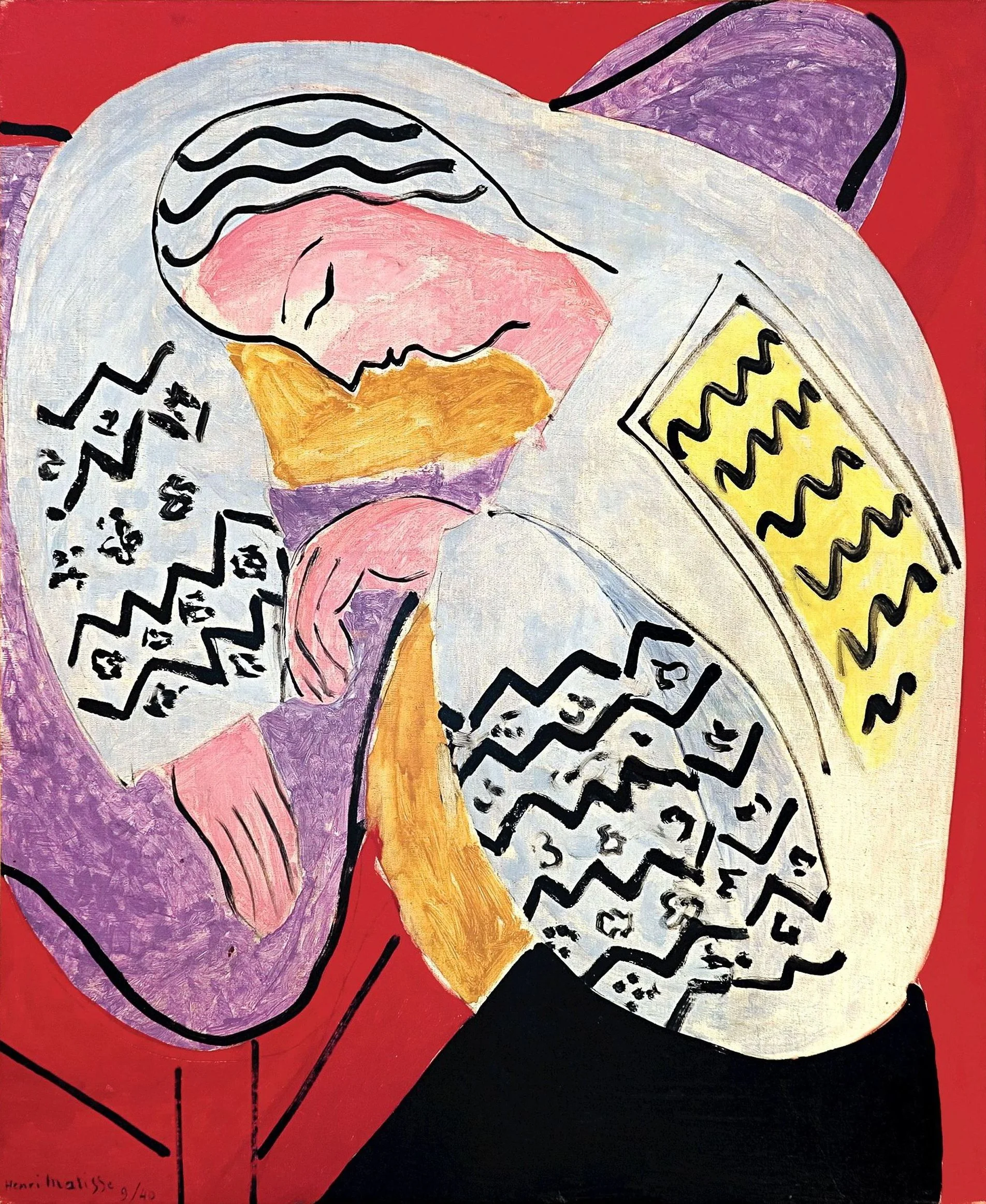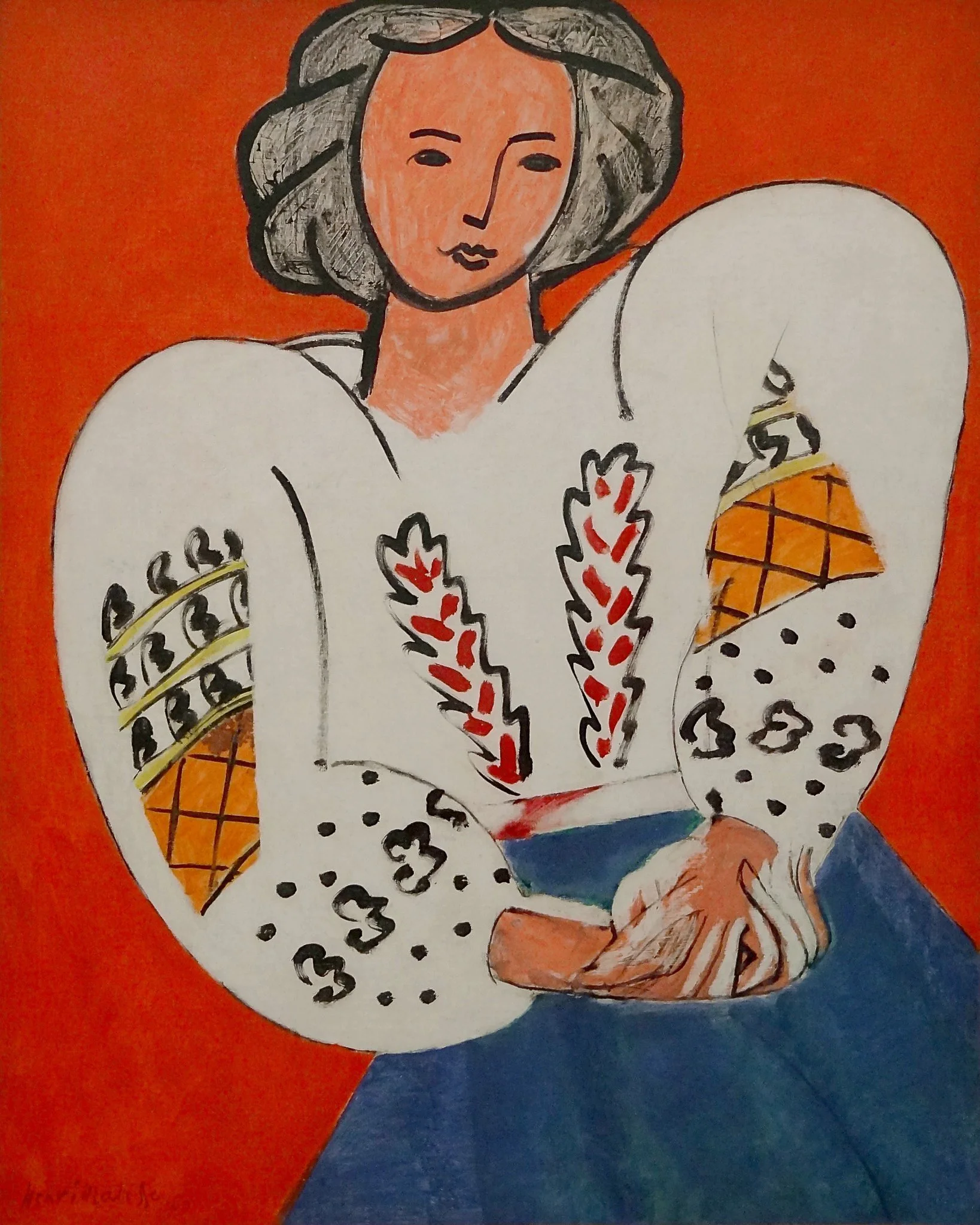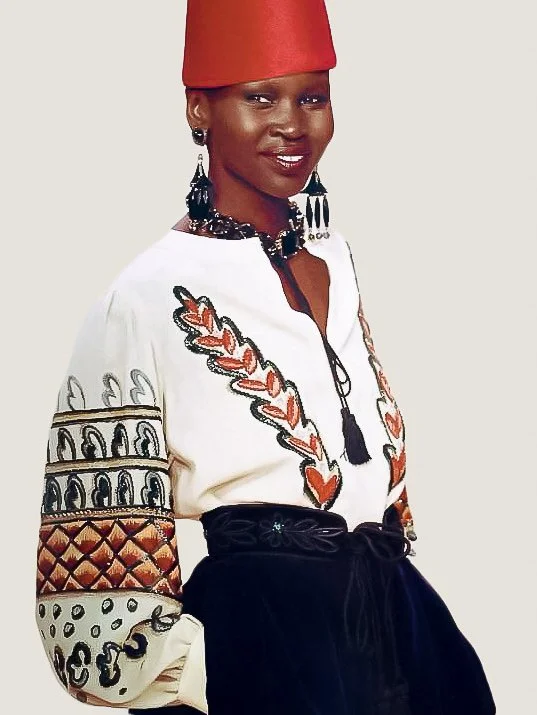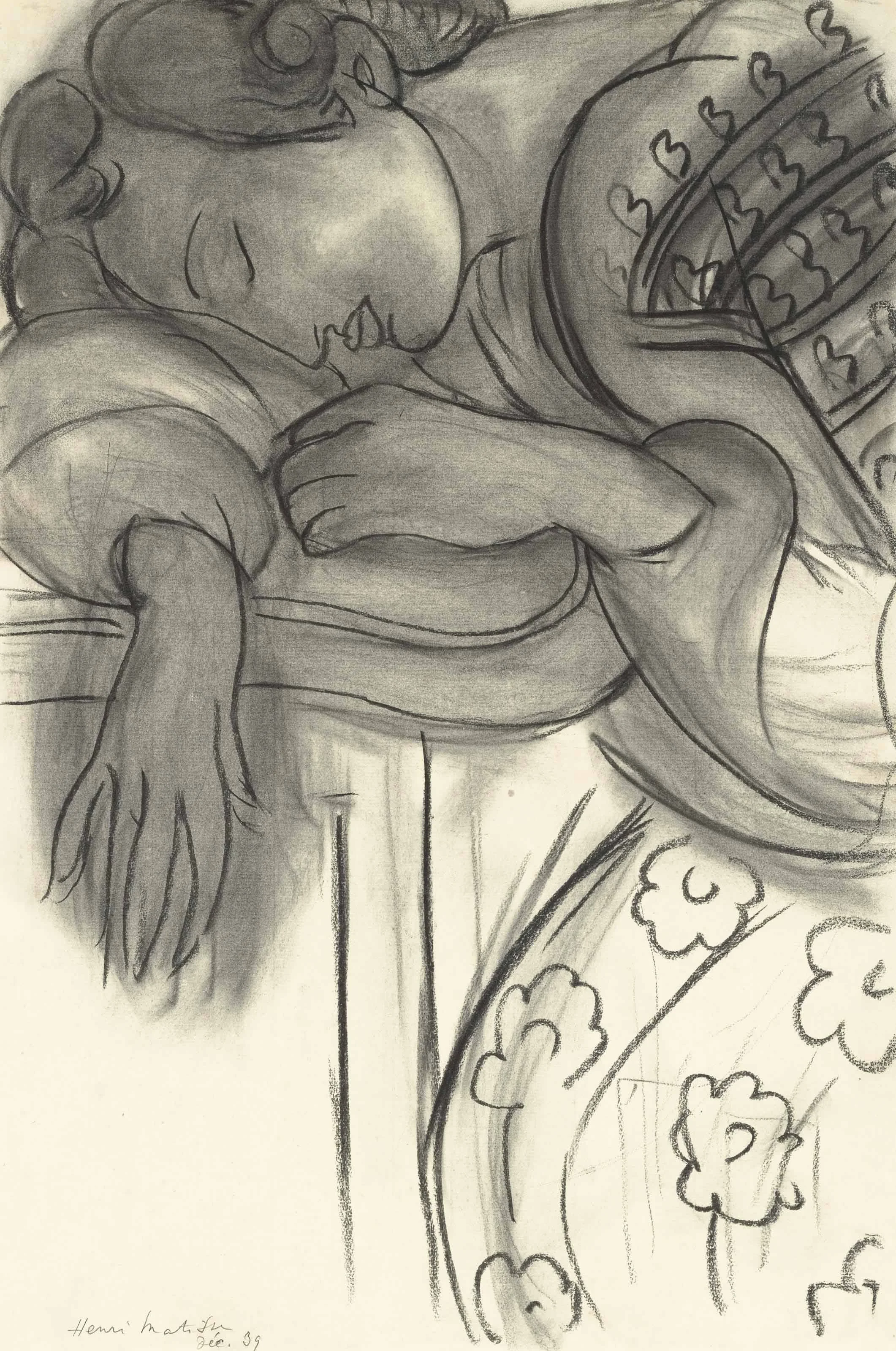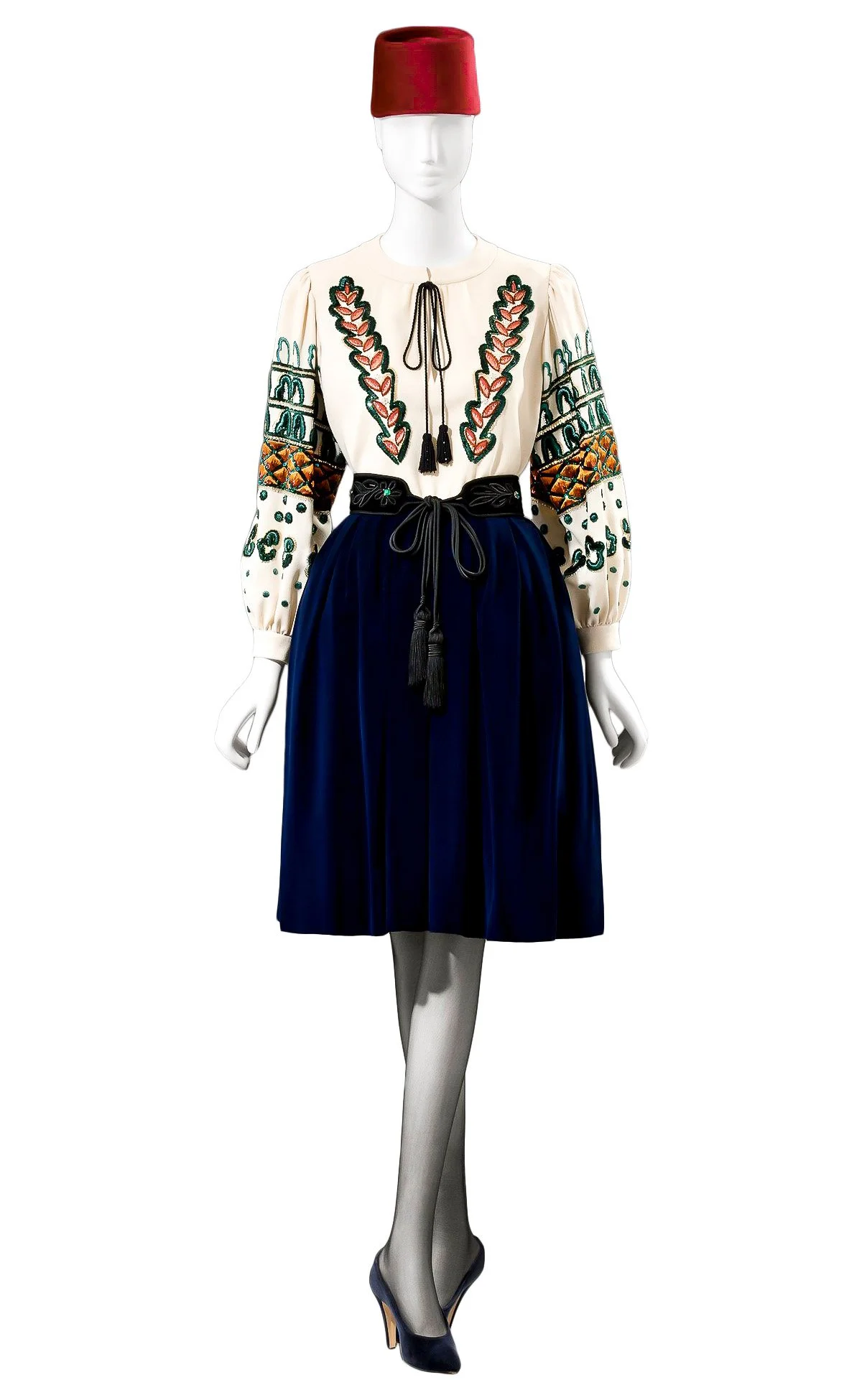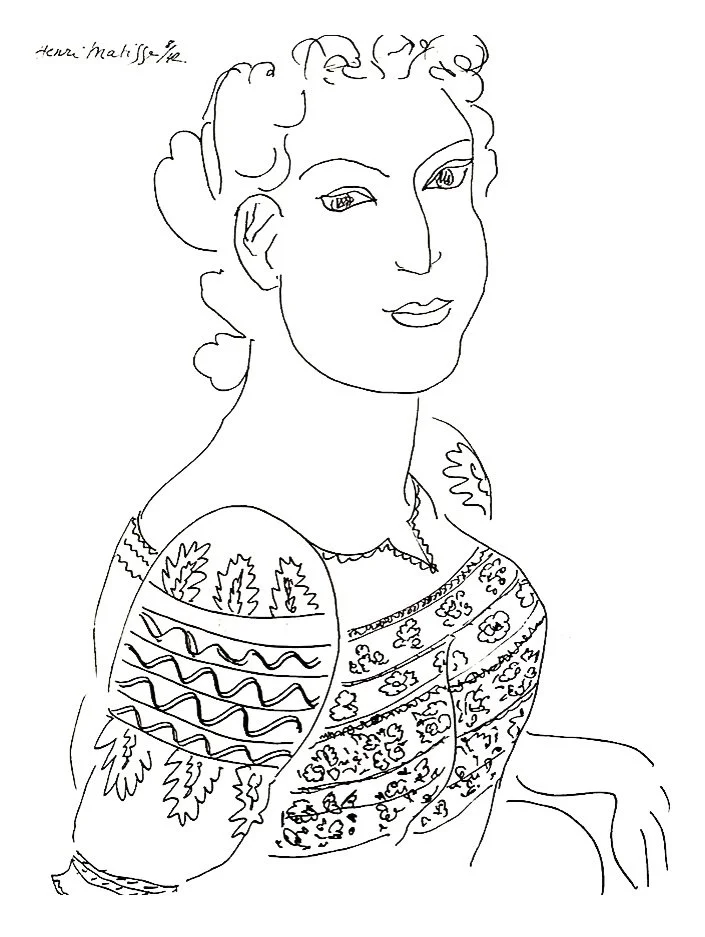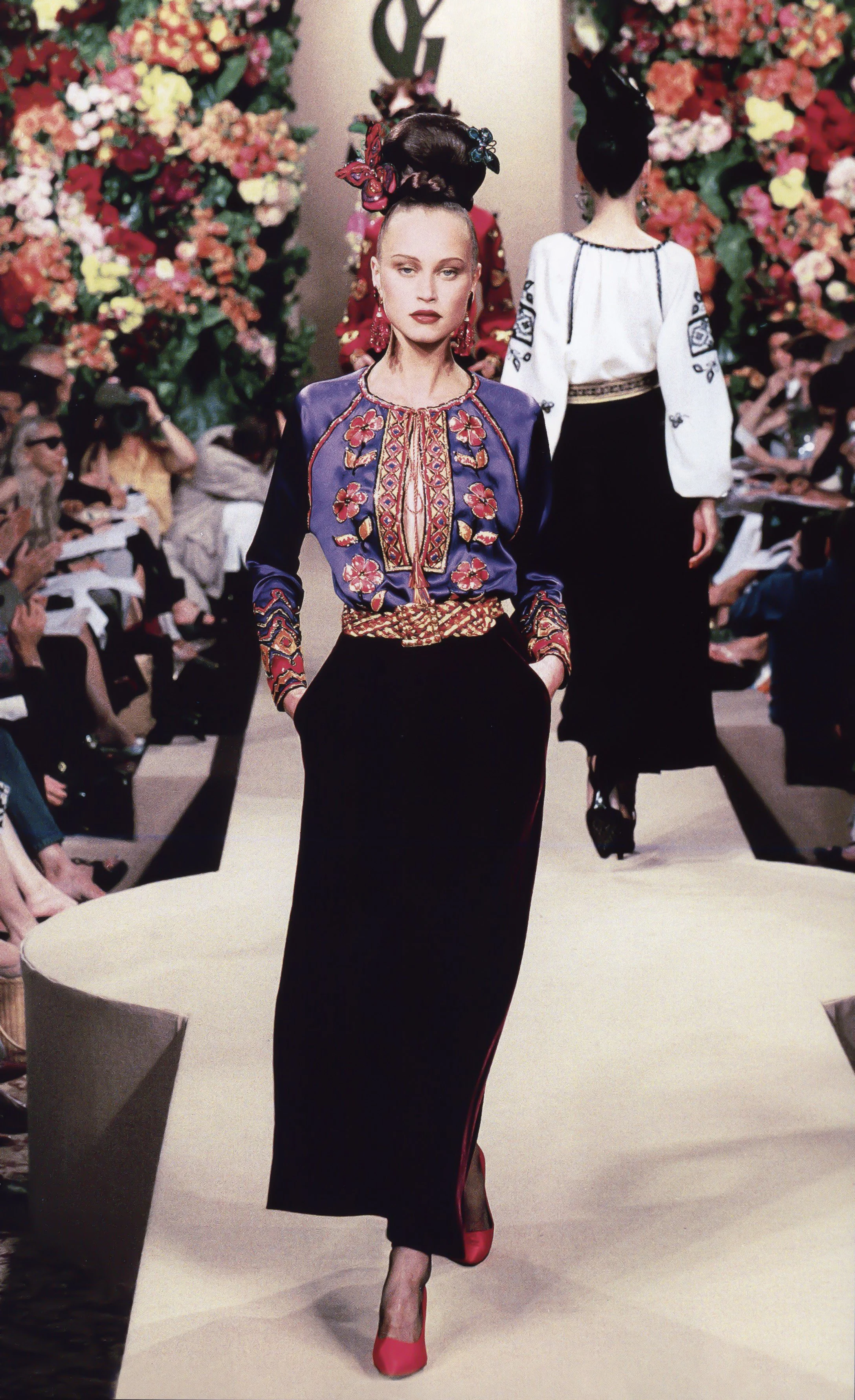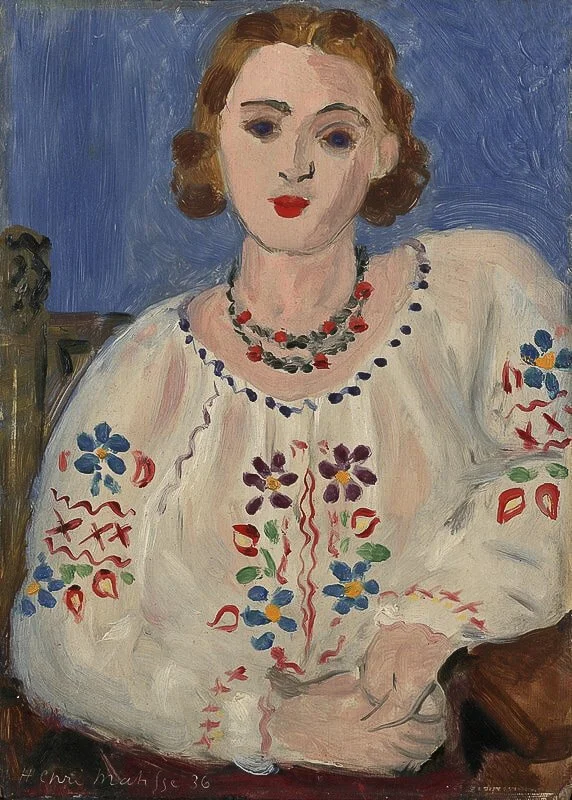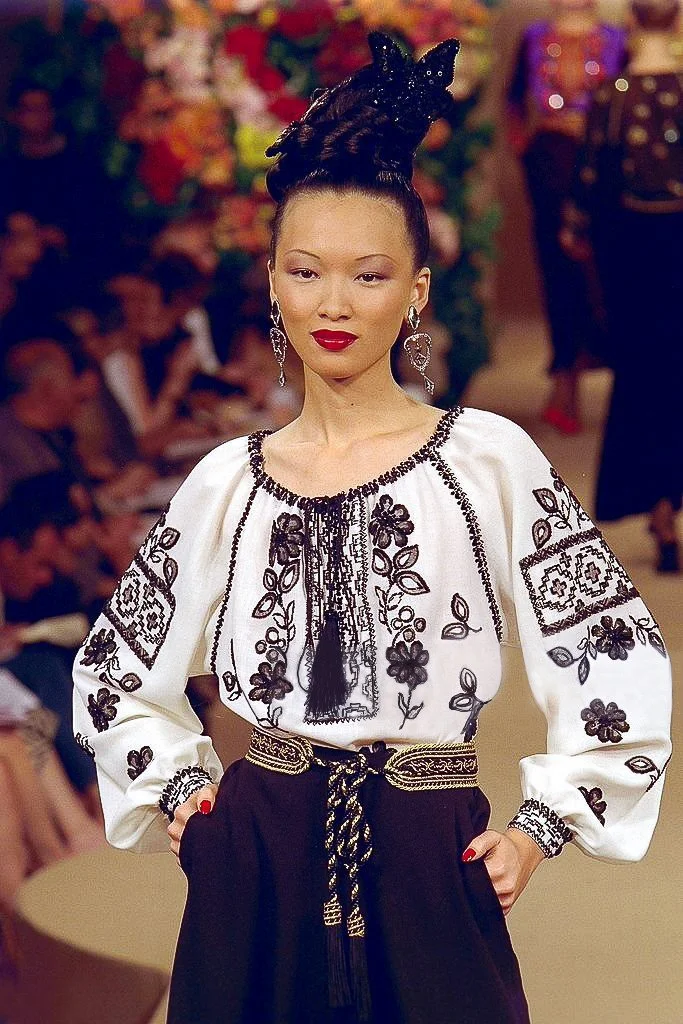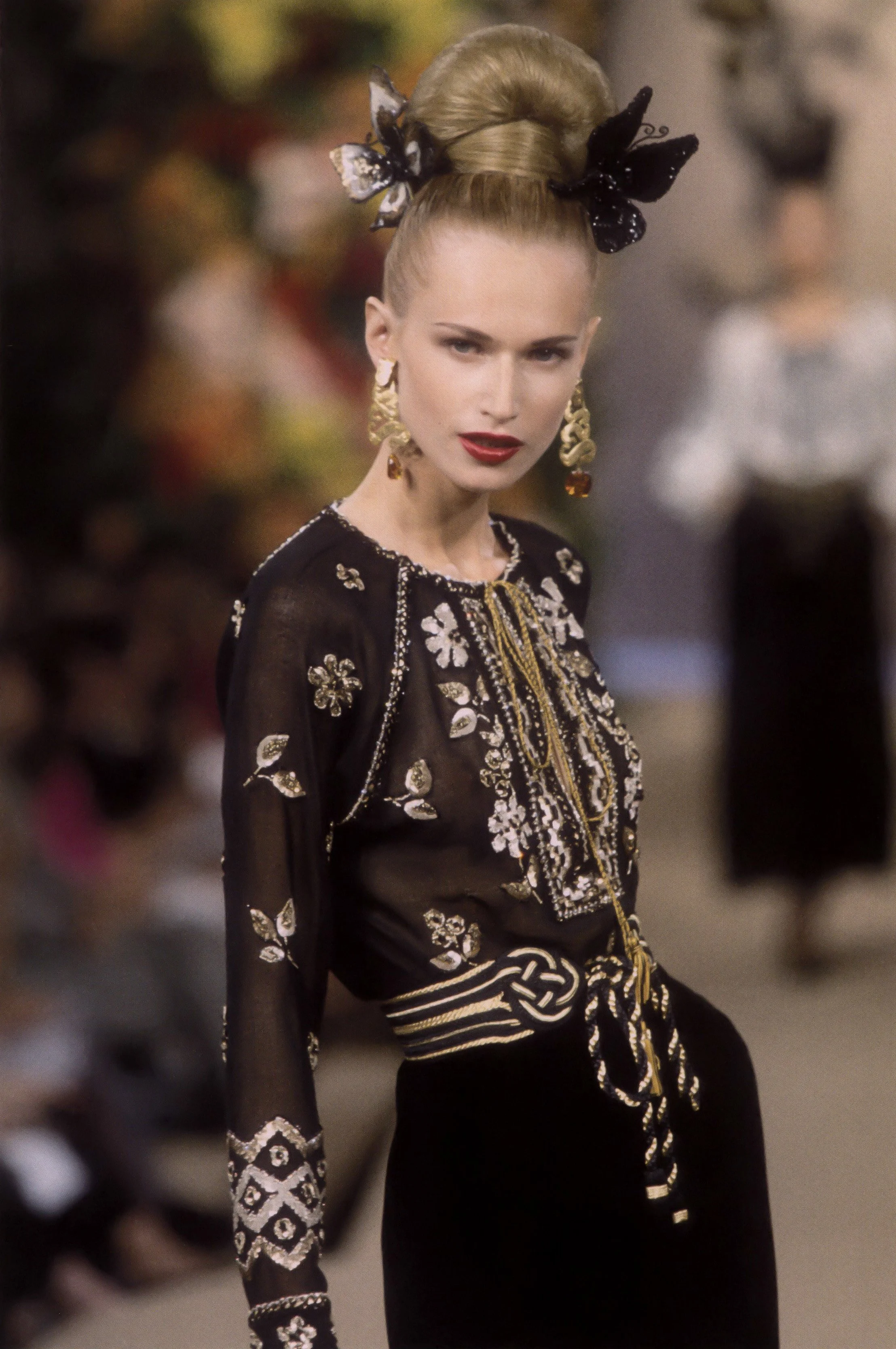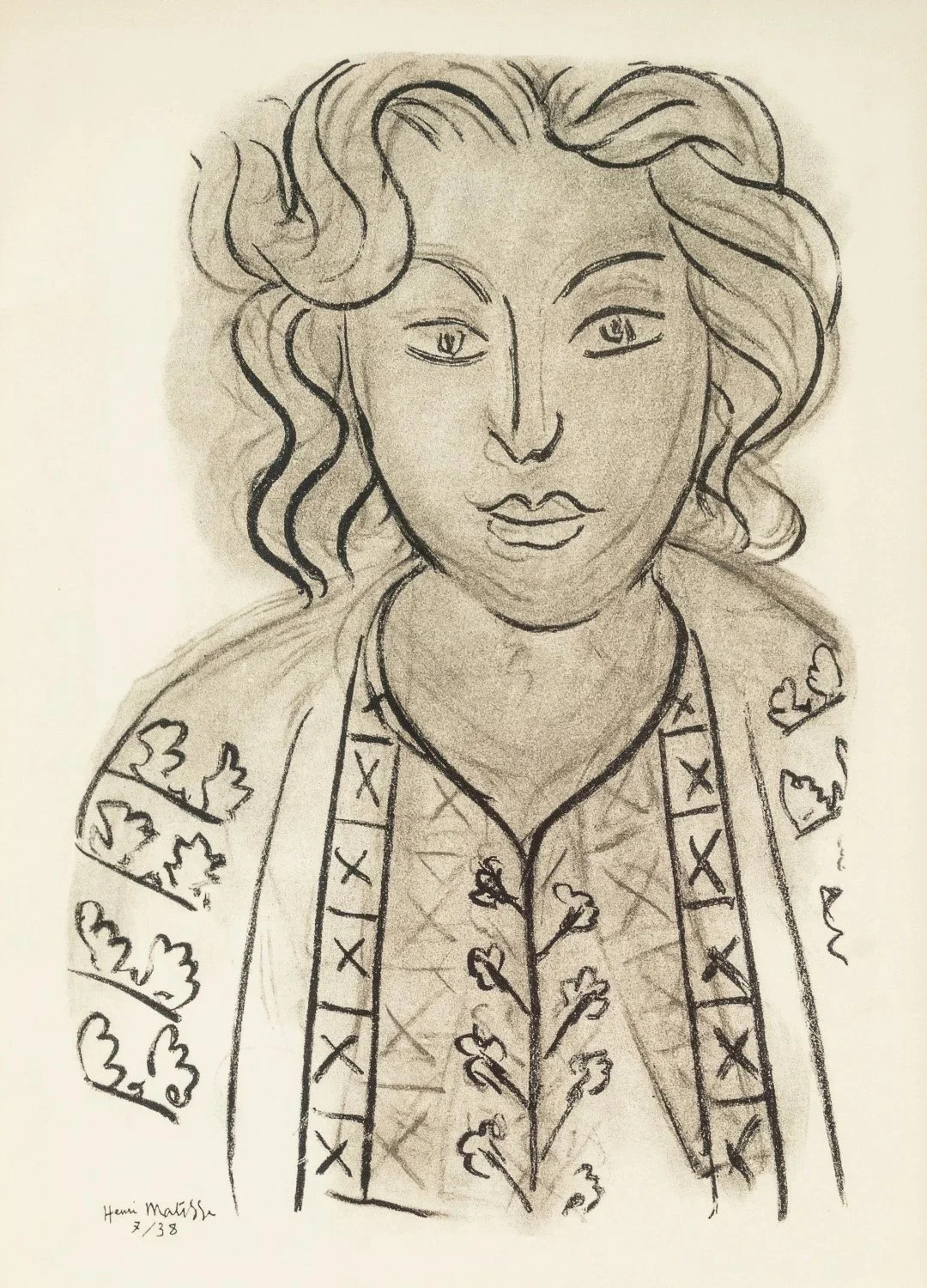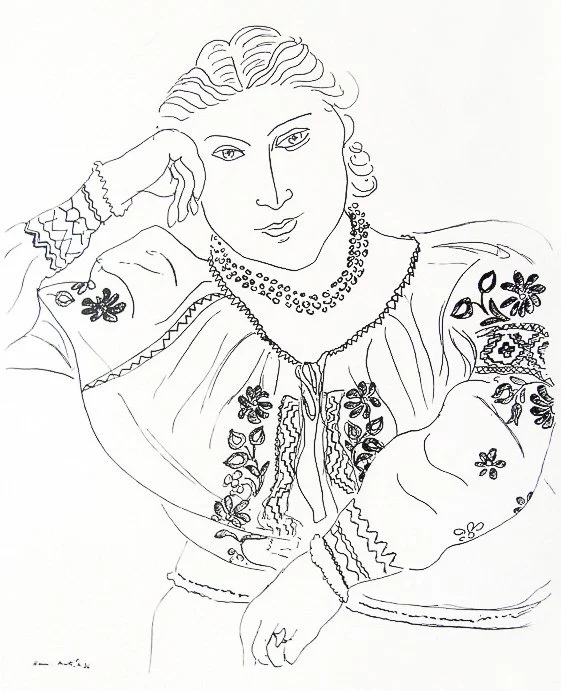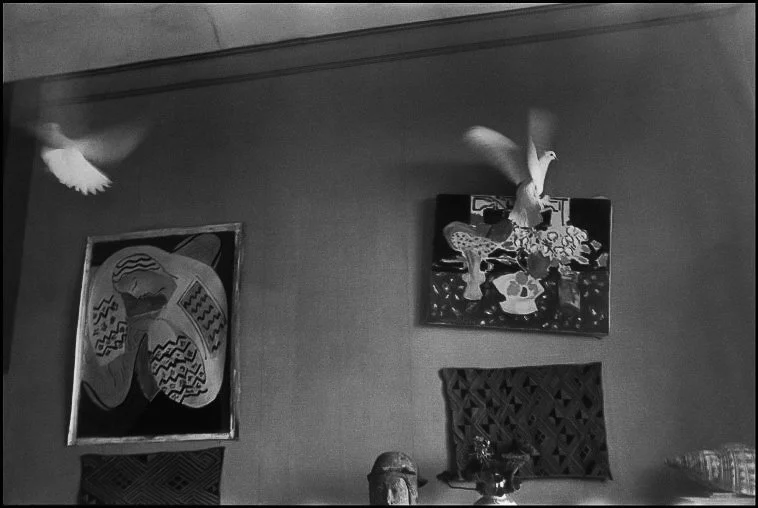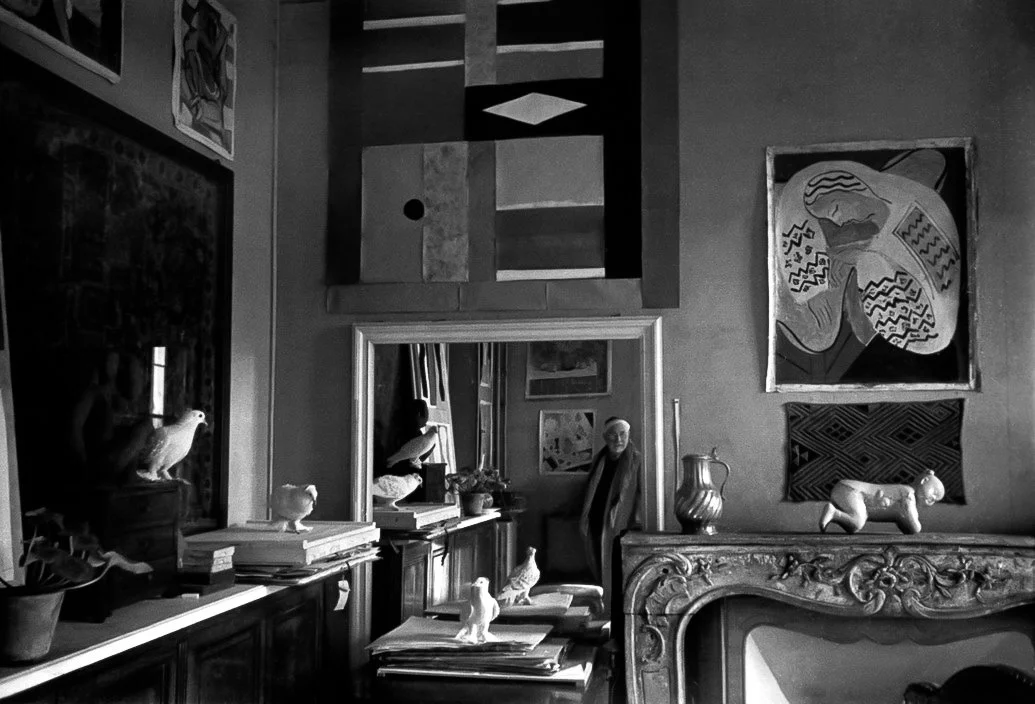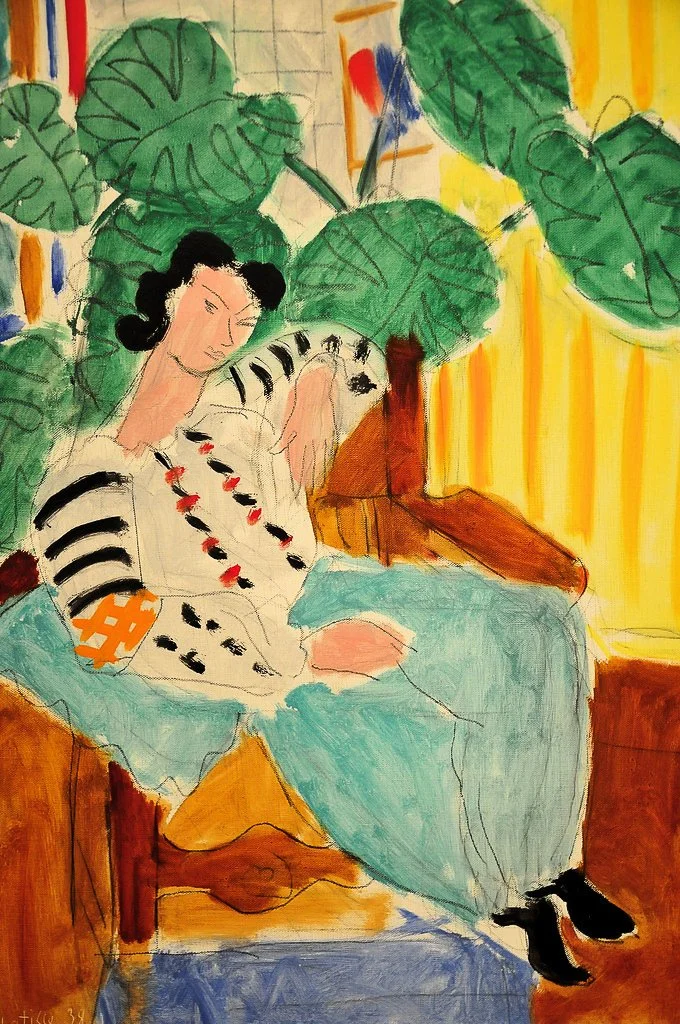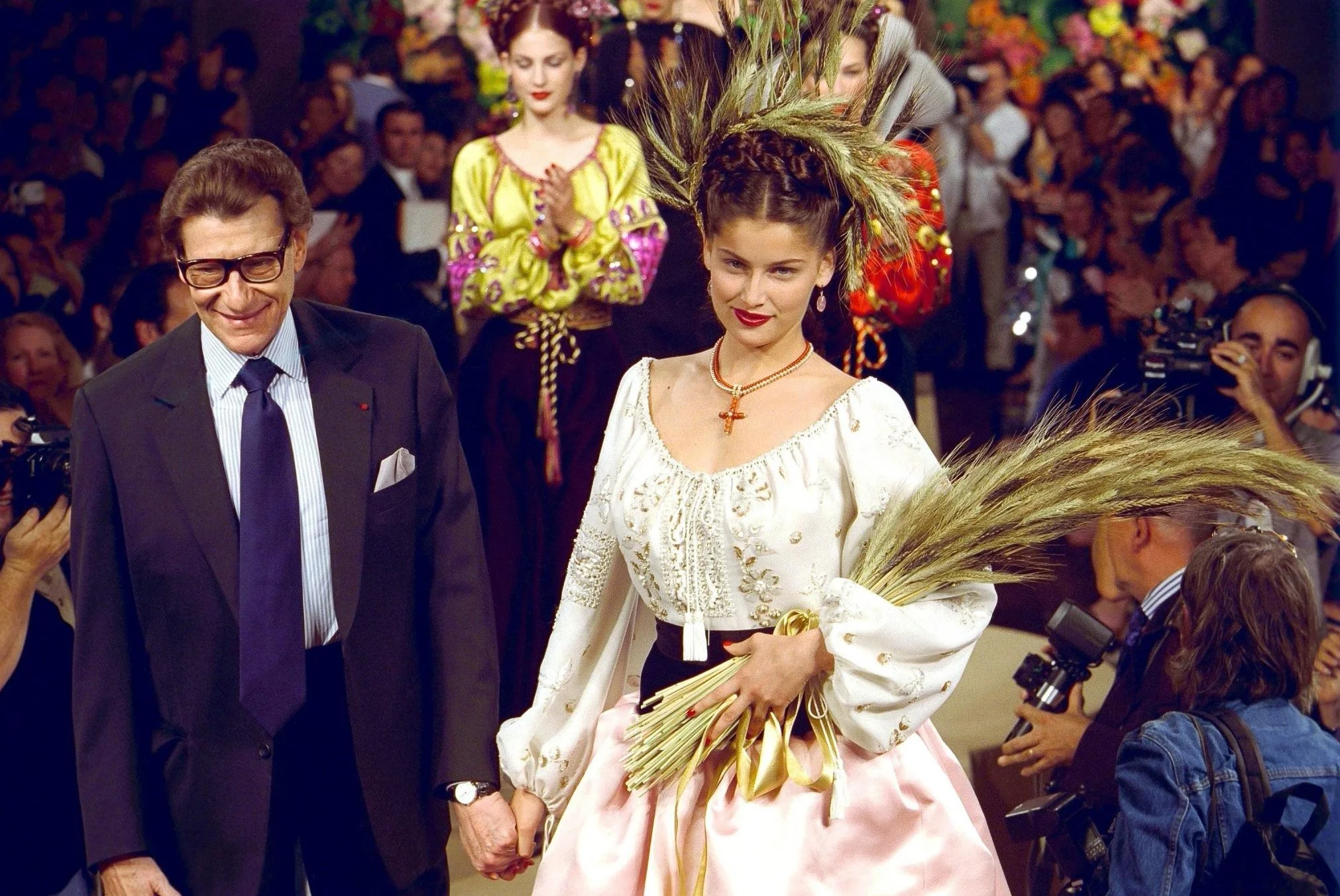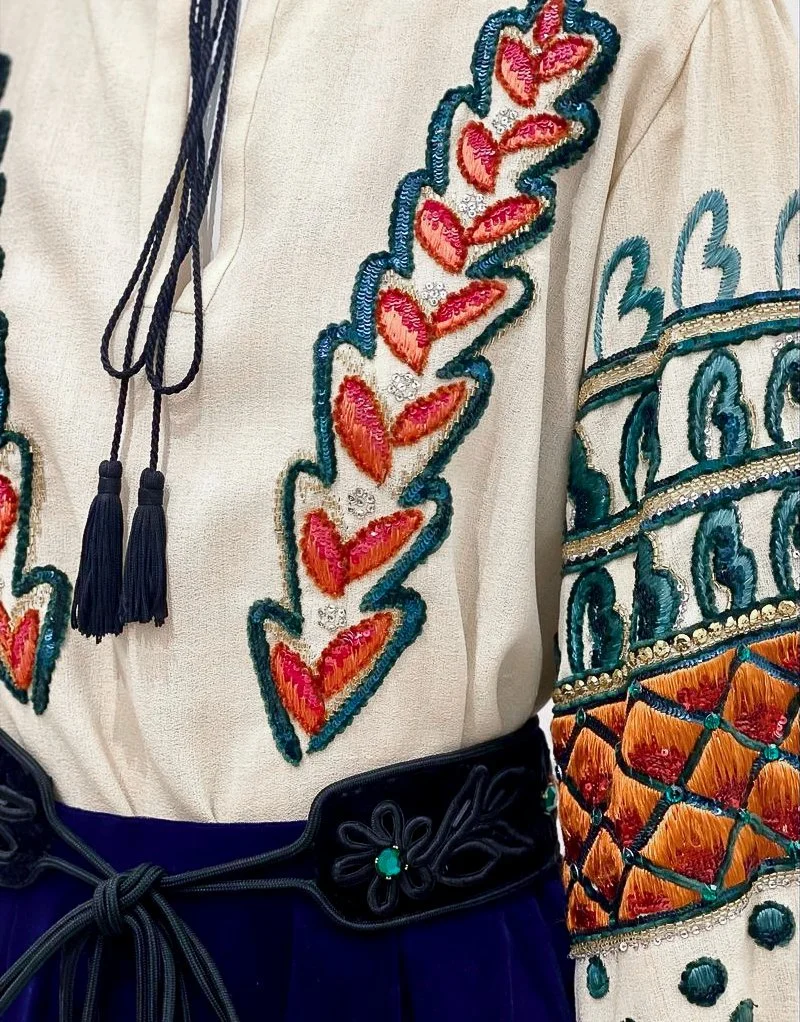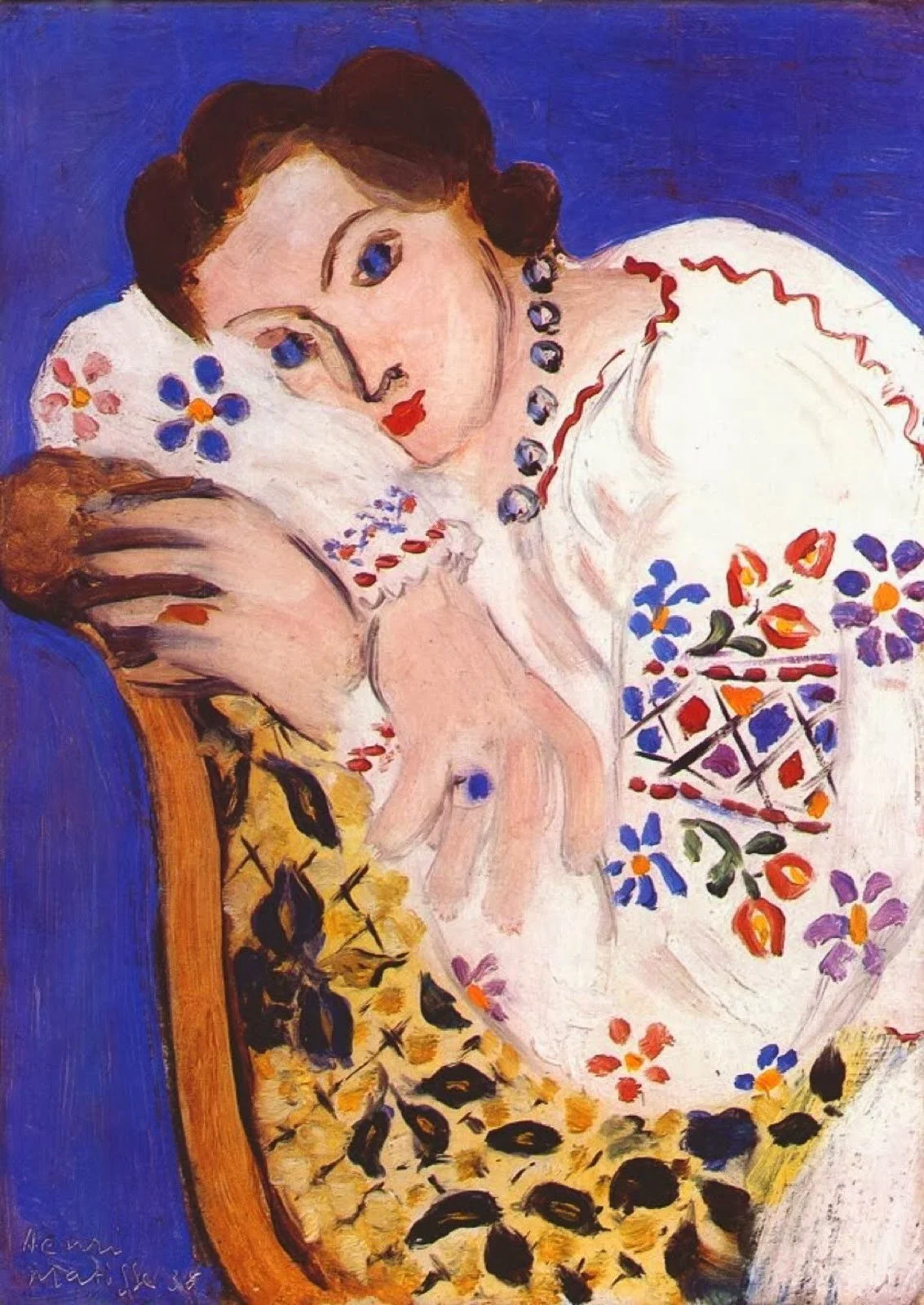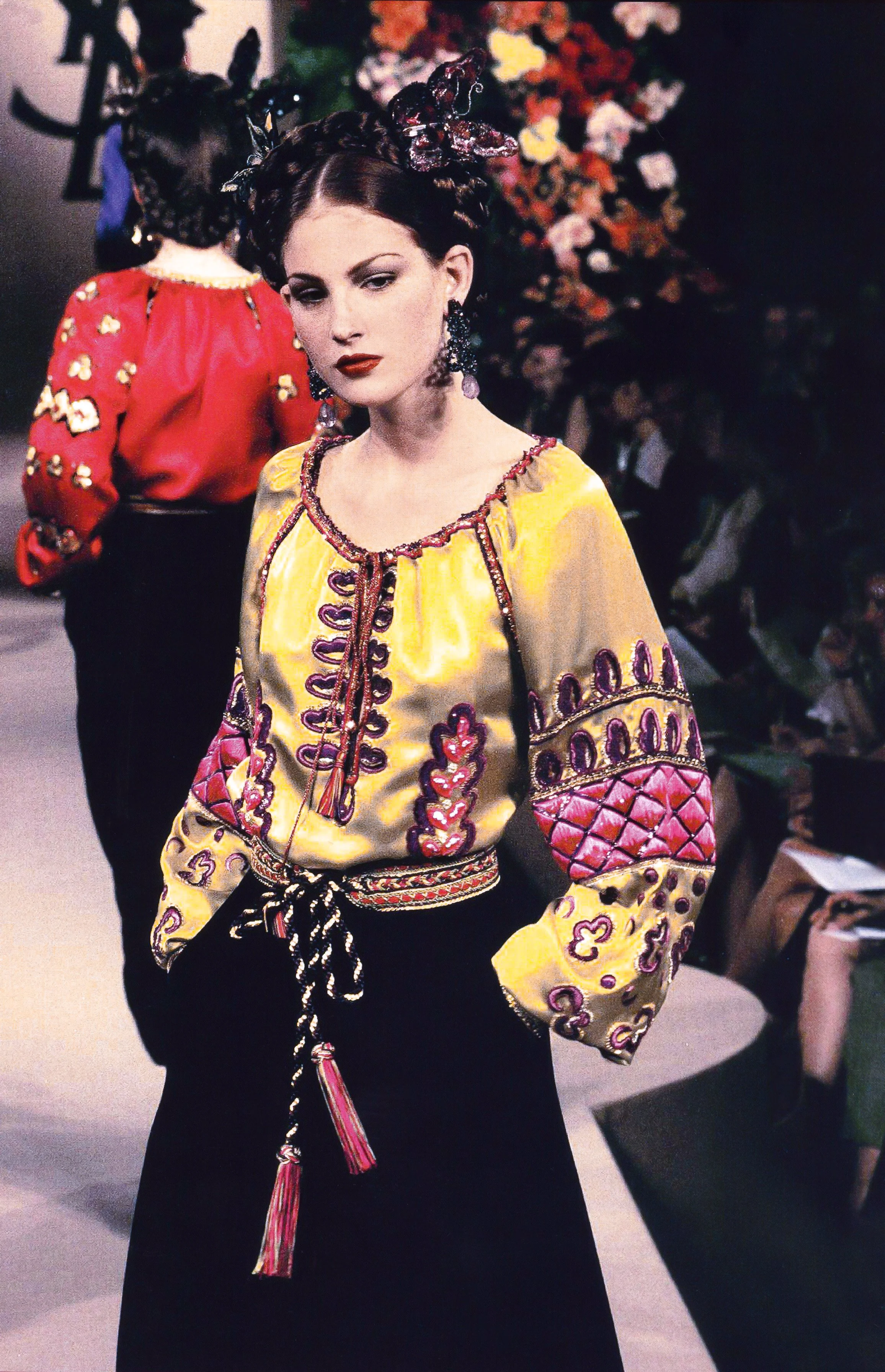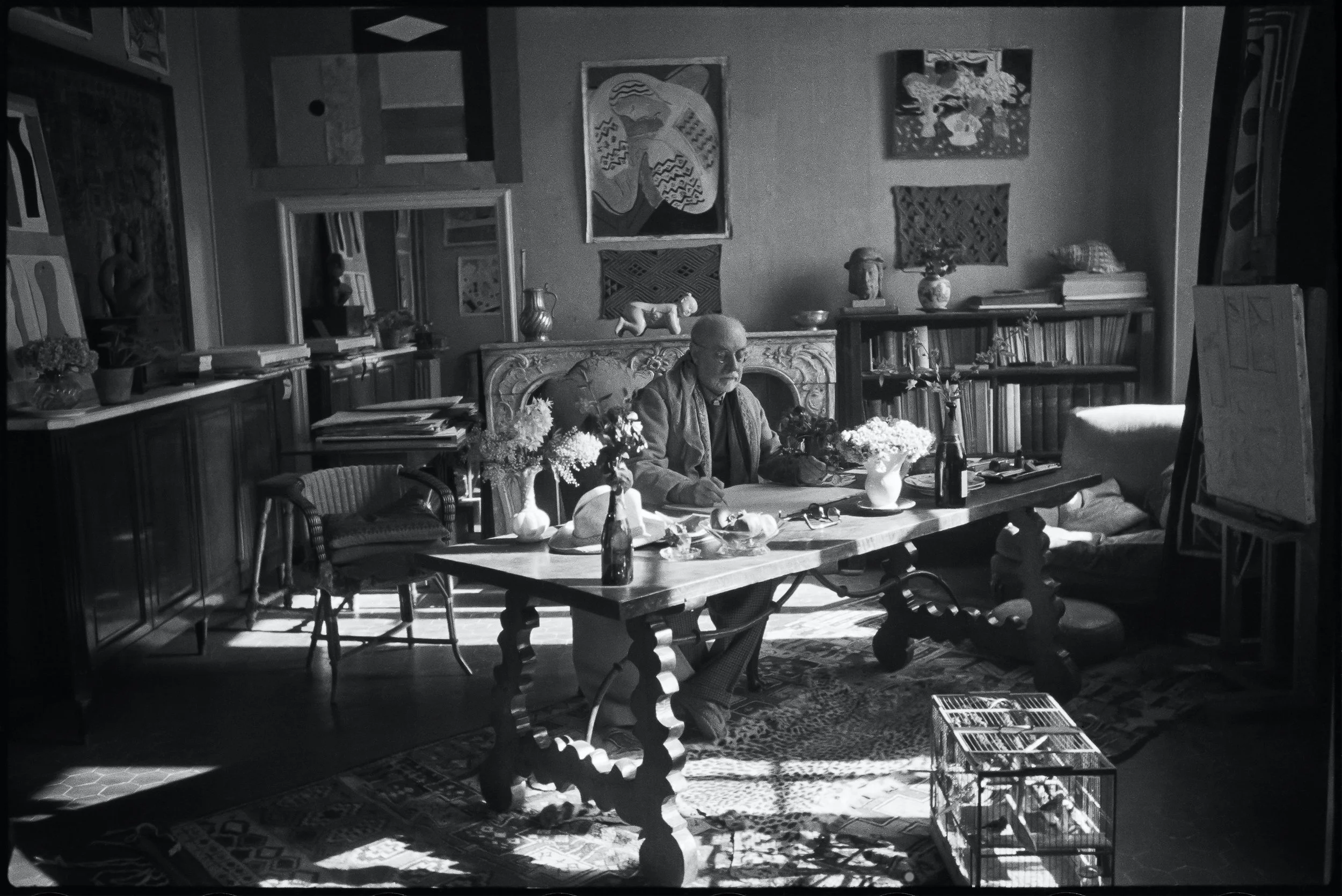LA BLOUSE ROUMAINE
The Dream • 1940 • Henri Matisse • Private Collection
Though Henri Matisse’s prolific career as an artist greatly inspired numerous pieces and collections designed by the creative legend Yves Saint Laurent, it was Saint Laurent’s interpretation of Matisse’s illustrated and painted Romanian folk blouses that became an iconic house staple for generations to come... After Monsieur Saint Laurent’s retirement from ready-to-wear, each of the esteemed designers that came after him including Alber Elbaz from 1998, Tom Ford from 2000, Stefano Pilati from 2004, Hedi Slimane from 2012, and Anthony Vaccarello from 2016, all created their own versions of the iconic blouse during their time as creative directors. Yet it was Yves Saint Laurent himself in 1981 and again in 1999 and 2002, and Pilati in 2005, that created the most literal adaptations of the blouses featured in Matisse’s extraordinary work.
Natalia Zavillova and Anna Maria Cseh backstage at Yves Saint Laurent’s Autumn / Winter 1999 Haute Couture Show • Paris • Roxanne Lowit
“A Romanian blouse does not belong to any period. All the peasant clothes are passed down from century to century without going out of fashion.”
La Blouse Roumaine • April 1940 • Henri Matisse • Musée National d’Art Moderne, Centre Pompidou, Paris
“At the end of the 1930’s Moroccan costumes again appear in Matisse’s work... Around this time, the intricate embroidery on a group of Romanian peasant blouses that Matisse had acquired from his friend Pallady led to an extensive group of paintings and drawings. It seems that these blouses enjoyed a certain vogue in Paris in the 1920’s, partly owing to the fact that they were worn by the glamorous Queen Marie of Romania, and the Romanian sculptor Constantin Brancusi was celebrated for appearing at Montparnasse parties dressed as a Romanian peasant. Matisse’s drawings and paintings of his blouses show different responses to the motif. In the beautiful The Dream (1940) the design of the blouse emphasizes the figure’s boldly simplified form, echoed in some of the drawings. In other drawings Matisse’s remarkable economy of line captures the delicate tracery of the blouse’s embroidery.” • Matisse, His Art and His Textiles
Alek Wek modeling an evening ensemble in tribute to Henri Matisse • Spring / Summer 2002 Haute Couture Collection • Yves Saint Laurent
Étude pour La Dormeuse (Le Rêve) (Study for The Dream) • December 1939 • Henri Matisse • Image courtesy of Christie’s
Evening ensemble in tribute to Henri Matisse • Autumn / Winter 1981 Haute Couture Collection • Yves Saint Laurent • Musée Yves Saint Laurent, Marrakech
Romanian Blouse • 1937 • Henri Matisse • Cincinnati Art Museum, Cincinnati
Anette Stai modeling Yves Saint Laurent’s Matisse inspired blouse • October 1, 1981 • Vogue • Denis Piel
Evening ensemble in tribute to Henri Matisse featuring an embroidered ivory wool crêpe Romanian blouse and a skirt in sapphire velvet • Autumn / Winter 1981 Haute Couture Collection • Yves Saint Laurent • Image courtesy of Yves Saint Laurent Style
The Romanian Blouse • 1942 • Henri Matisse • The Pushkin State Museum of Fine Arts, Moscow
Romanian inspired black blouse • Circa 2005 • Stefano Pilati for Yves Saint Laurent
The Green Romanian Blouse • 1939 • Henri Matisse • Private Collection
Model wearing a peasant blouse in iris satin with floral embroidery and a skirt in pomegranate silk velvet • Autumn / Winter 1999 Haute Couture Collection • Yves Saint Laurent • Image courtesy of CATWALK Yves Saint Laurent : The Complete Haute Couture Collections by Suzy Menkes
Woman in Patterned Blouse • 1936 • Henri Matisse • Yale University Art Gallery, New Haven
Model wearing a Romanian inspired blouse • Autumn / Winter 1999 Haute Couture Collection • Yves Saint Laurent
Collection of Romanian peasant blouses from the second half of the nineteenth century • Image courtesy of Matisse, His Art and His Textiles : The Fabric of Dreams by Ann Dumas in association with the 2005 exhibition at The Metropolitan Museum of Art, New York CIty
Model wearing a Romanian inspired blouse • Autumn / Winter 1999 Haute Couture Collection • Yves Saint Laurent • Image courtesy of Yves Saint Laurent Accessories by Patrick Mauriès
Portrait de Femme • 1939 • Henri Matisse
Laetitia Casta modeling a Romanian inspired wedding dress with a crown made of corn • Autumn / Winter 1999 Haute Couture Collection • Yves Saint Laurent • Image courtesy of Yves Saint Laurent Accessories by Patrick Mauriès
Romanian inspired ivory blouse • Circa 2005 • Stefano Pilati for Yves Saint Laurent
Woman in an Embroidered Blouse with Necklace • 1936 • Henri Matisse • Fogg Art Museum, Harvard University, Cambridge
Queen Marie as Crown Princess of Romania, wearing traditional Romanian attire
Scene from Villa Le Rêve, the home of Henri Matisse (The Dream can be seen hanging in the background) • 1944 • Henri Cartier-Bresson
Jeune Fille Dormant à la Blouse Roumaine • December 1939 • Henri Matisse • Image courtesy of Phillips
Henri Matisse at his home, Villa Le Rêve (The Dream can be seen hanging in the background) • 1944 • Henri Cartier-Bresson
Small Romanian Blouse with Foliage • 1937 • Henri Matisse • Baltimore Museum of Art, Baltimore
Laetitia Casta wearing a Romanian inspired wedding dress closing the show with Yves Saint Laurent • Autumn / Winter 1999 Haute Couture Collection • Yves Saint Laurent
Detail of Yves Saint Laurent’s Matisse inspired blouse on view at the Centre Pompidou • Image courtesy of Nathalie Farman-Farma
Woman in a Patterned Blouse • Circa 1936 • Henri Matisse
Natalia Zavillova modeling a peasant blouse in chartreuse satin with embroidery in iris and fuchsia and a skirt in amethyst silk velvet • Autumn / Winter 1999 Haute Couture Collection • Yves Saint Laurent • Image courtesy of CATWALK Yves Saint Laurent : The Complete Haute Couture Collections by Suzy Menkes
Henri Matisse at his home, Villa Le Rêve (The Dream can be seen hanging in the background) • 1944 • Henri Cartier-Bresson

